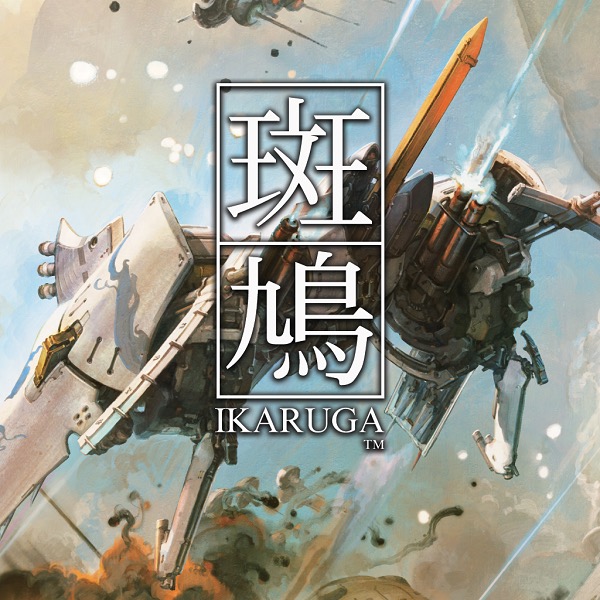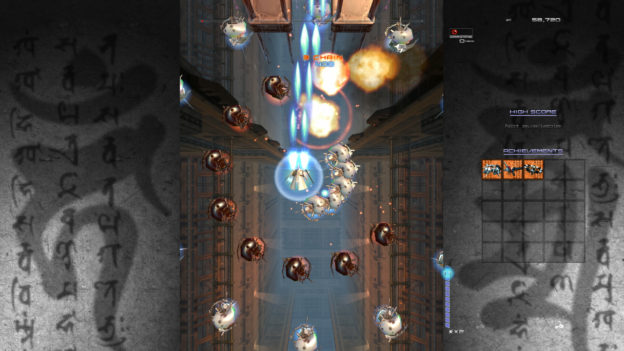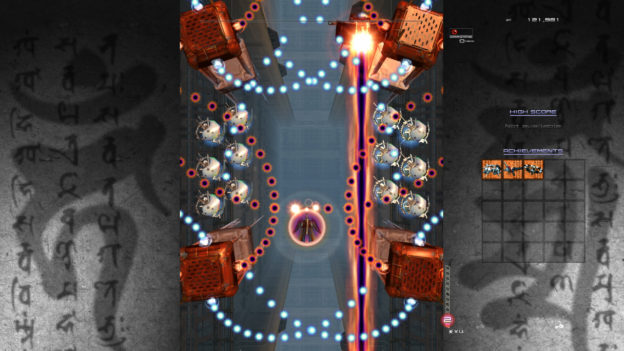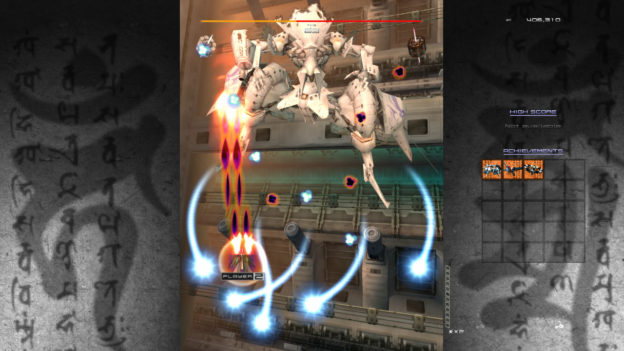I never got the chance to experience Ikaruga on the GameCube but I have always heard good things about it. Not only did it have a great developer (Treasure), it brought an interesting twist to the scrolling shooter genre. So how does Ikaruga shape up on the Nintendo Switch?
Ikaruga is a very interesting scrolling shooter. To give you some background, I’ve enjoyed many shooter games in my day going back to 1942 and 1943 on the NES. I wouldn’t say I’m a huge fan of the shooter genre but I’m always curious to play new ones because of my love for those early classics. For the most part, these types of shooter games aren’t typically long games–and Ikaruga is no exception. In fact, it’s probably one of the shortest games I’ve played in recent memory but that’s if I used continues. The game is very difficult especially with the default options. The Arcade Mode in “Normal” difficulty will be enough to turn off most gamers. I went to the “Easy” mode and still had plenty of issues making it passed the second Chapter. It wasn’t until I found the option to enable Continues that I was able to get further. While the difficulty will definitely scare some, it is still rewarding. A lot of the boss battles and enemy encounters are fun to beat because of the added puzzle element in Ikaruga.
That unique “puzzle” element is the core, defining aspect of the gameplay. Your ship in the game can toggle between light and dark modes. Light mode absorbs enemy fire that is light and dark mode absorbs fire that is dark–makes sense right? By absorbing enemy fire of the same color, your ship can build up energy and then release it on command for some devastating attacks. Additionally, when in light mode, your attacks will do more damage to the opposite colored ships. All of this makes for some very interesting encounters. In most shooter games, your goal is shoot while not being hit at all. In Ikaruga, you actually want to get hit by projectiles of the same color to build up your energy. This took some getting used to at the beginning–I inherently wanted to avoid all enemy fire for the longest time. But once you acclimate, it feels satisfying when you absorb enemy fire, then dish it back out with a nice homing missile counter-attack.
While the light/dark switching is fun at first, there’s really no other abilities or weapons to be gained later on. Scrolling shooting games like this almost always have upgradeable weapons or power-ups that can be picked up–not Ikaruga. This was a little disappointing to me but I can see that they wanted to focus on this unique “switching” element throughout the game.
Visually, Ikaruga is very impressive! Even though the perspective is top-down, the game features fully 3D-rendered models and backgrounds. There are some cool transitions and intros into levels that show off the environments well. The animation is buttery smooth and I never noticed any frame-rate dips which is a must in this genre. There is also some great enemy variety each with their own unique attacks and animations–the bosses being particularly fun to battle. In handheld mode, the game has a vertical display option that allows players to turn the Switch to a vertical orientation to use more of the screen’s real estate. It’s a nice addition to the package for sure.
Overall, Ikaruga is a great shooter but not quite what I was expecting. The length of the game combined with the difficulty may deter most people but the game is customizable enough to be fun for anyone. The game even features a couple 2-player options so you can invite a friend along for the ride. If you’re a fan of shooter games, Ikaruga is definitely worth checking out. From the combo system, to the light/dark switching, it offers some unique gameplay elements even for genre veterans. Just be ready for a healthy challenge!
Review: Ikaruga (Nintendo Switch)
Very Good
Overall, Ikaruga is a great shooter but not quite what I was expecting. The length of the game combined with the difficulty may deter most people but the game is customizable enough to be fun for anyone. The game even features a couple 2-player options so you can invite a friend along for the ride. If you’re a fan of shooter games, Ikaruga is definitely worth checking out. From the combo system, to the light/dark switching, it offers some unique gameplay elements even for genre veterans. Just be ready for a healthy challenge!





